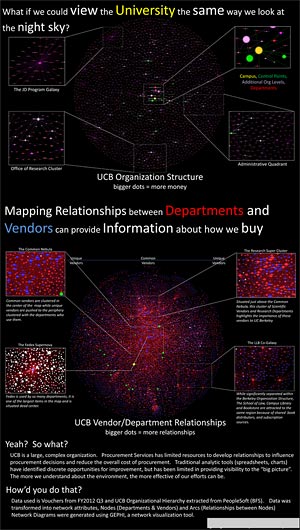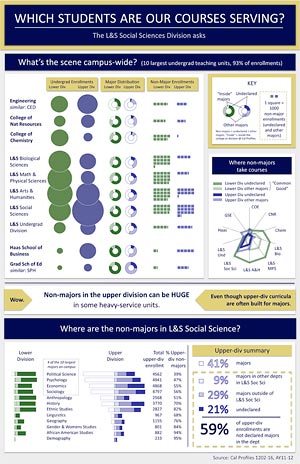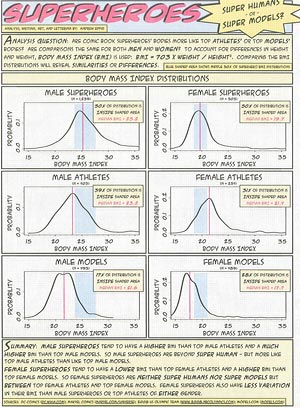Making hard data easier to manage
UC Berkeley builds momentum for its multi-year effort to overhaul how the campus manages data, from student financial aid to staff diversity to equipment purchasing.

September 17, 2012
UC Berkeley hosted a mini-symposium last month on an ambitious, multi-year effort to overhaul how the campus manages data, from student financial aid to staff diversity to equipment purchasing. Not surprisingly, dataphiles packed Alumni House, eager to chart the effort’s progress and potential.
The Institutional Data Management and Governance initiative’s impacts, though, are likely to be felt in every corner of the campus.
Launched in 2007, the IDMG initiative aims to transform Berkeley’s smorgasbord of fragmented data systems into an all-purpose data warehouse where analysts and decision-makers, staff and students can easily access integrated, reliable information presented in a customizable, user-friendly framework.
“When I first came to campus, we had large volumes of data coming from all these different sources,” says Erin Gore, an associate vice chancellor and Berkeley’s chief financial officer. “Data was difficult to digest, inconsistent and confusing, often providing multiple answers to the same question.”

UCSF staffer Greg Macway mapped campus Bear Buy data in celestial formations to illustrate department-vendor buying patterns. (Click to enlarge)
Gore recalls an example from several years ago when three major newspapers published articles about the impact of California’s fiscal crisis on UC Berkeley. The stories reported conflicting statistics obtained from three different campus sources.
“The perception was, ‘You’re supposed to be a world-class university, but you can’t even get your own numbers straight,’” Gore says.
As chair of Berkeley’s Institutional Data Council (IDC), Gore is overseeing implementation of the road map of recommendations that underpins the IDMG initiative. The plan outlines strategies to integrate data-collection systems, consolidate reporting tools and enhance analytical support to improve the quality of operational planning and decision-making campuswide.
“We need to think about data as an asset that can help us work smarter and be more efficient and effective in everything we do, which dovetails with Operational Excellence,” Gore explains.
At the core of the initiative stands Berkeley’s Enterprise Data Warehouse, the back-end platform where data streams from different campus units are integrated into a secure centralized repository that will gradually replace the existing environment of siloed information and fragmented shadow systems — which numbered roughly 300 several years ago.
Berkeley’s Office of Equity and Inclusion recently secured a multi-million-dollar grant from the Evelyn and Walter Haas Jr. Fund to expand diversity initiatives on campus. Rather than develop its own new reporting system, the office allocated a portion of the five-year award to build the diversity-data project within Berkeley’s new EDW infrastructure.
On the front end, the EDW will support a series of web-based storefront portals — complete with dashboards of query, analysis and reporting tools — to provide multi-layered access to information for administrators, staff and students.
Last summer, the campus rolled out its primary data portal, CalAnswers, which provides access to a variety of student data already stored in the warehouse, including registered students, undergraduate retention and graduation rates, degrees and certificates awarded and some data on undergraduate applications. Several other student datasets, including student financials, curricula and course enrollments, will become available over the coming months.
In addition to student data, the buildout of CalAnswers includes data on facilities and space inventory and use; human resources, payroll and demographics; finance and budgets; gifts and donors; research projects and funding; and some information on procurement.

Cathryn Carson, an associate professor of history at Berkeley, won plaudits for her social-science supergraphic. (Click to enlarge)
“We want to shift the focus from questions of how data is collected and invert the time and effort we can devote to analyzing the data and understanding its implications,” says Pamela Brown, IDMG project advocate and executive director in the Office of Planning and Analysis.
In August, Gore’s office used another new EDW-supported tool called CalPlanning — a web-based spreadsheet platform for financial reporting, analysis and forecasting — to produce the 2012-13 budget plan. As the campus’s first all-funds, all-units budget, the report details all revenue sources — public and private, restricted and unrestricted — as well as expenditures across every campus control unit, school, college and division.
“The new budget plan provides greater transparency about our resources and how they align to our strategic goals,” Gore says. “The new Middle Class Access Plan is one example of what we were able to accomplish by having a clearer picture of revenue and expenses, and CalPlanning will help units make comparable strategic financial decisions to strengthen their programs and keep Berkeley great.”
Last month’s mini-symposium, which was co-sponsored by Operational Excellence and the Center for Organizational Workforce Effectiveness, served as the capstone event for the 2012 IDMG Summer School, a biennial series of workshops organized by the IDC to build awareness and momentum around Berkeley’s data initiative.
“We’re making great progress in simplifying processes and updating our approach, and we’re determined to build on that momentum to create one central, official source for institutional information that is broadly accessible and user-friendly,” Gore says.
Organized around the theme “I See in 3-D: Data-Driven Decisions,” this year’s summer school featured presentations covering best-practice tools, tips and techniques for organizing, analyzing and presenting data. The series was supported by staff organizations including the Business Process Analysis Working Group, the Cal Assessment Network and the Policy Analysts Roundtable.
Workshops also focused on effective messaging and communications, operational metrics and the campus’s new IT productivity software suite — the campus recently introduced the group of common software tools, including email and calendar applications, to support collaboration, strengthen connectivity and minimize inefficiencies across the campus community.
The final workshop addressed the crucial area of data presentation through a panel discussion on what decision-makers want from data analytics.

Equity and Inclusion’s Andrew Eppig blended creative, data-intensive and narrative qualities to create his comic book-themed analysis. (Click to enlarge)
CFO Gore was joined for the roundtable by Andrew Szeri, dean of the Graduate Division and Operational Excellence faculty lead; Ivor Emmanuel, director of the Berkeley International Office; and Greg Dubrow, director of research and policy analysis in the Office of Undergraduate Admissions.
Wrapping up the summer series, the mini-symposium showcased that blending of art and analytics as the three winners of the IDMG data-visualization contest explained their efforts to weave complex data sets into engaging visual narratives.
“The symposium was the perfect way to close out the summer school series because it gave the group an opportunity to discuss discrete projects put together by colleagues,” Gore said. “The contest provided the campus with great examples of what IDMG is all about and demonstrated what our staff can achieve when they combine their talent with the right tools.”
Equity and Inclusion’s Andrew Eppig was named overall winner for his comic book-themed narrative analysis comparing the body mass indexes of male and female super heroes, Olympic athletes and models.
Judged most creative, UCSF staffer Greg Macway mapped BearBuy data in celestial formations to illustrate department-vendor buying patterns. (BearBuy is the new UCSF-Berkeley web-based procurement system.) Berkeley’s Cathyrn Carson, associate professor of history, earned plaudits for greatest clarity with her social-science supergraphic answering questions related curricula, students and majors.
“This is about more than visuals and all three winners presented an extensive amount of complex data that conveyed their message in a clear, concise, meaningful and engaging manner,” Gore said. “As a one-pager, Andrew’s data visualization was extremely creative and provides enough information that it can stand by itself and convey its findings in a narrative that can be readily understood.”